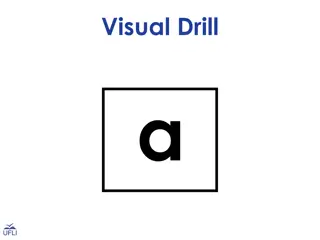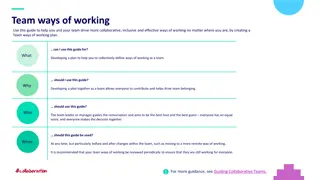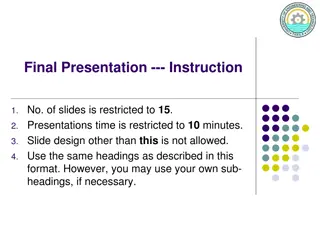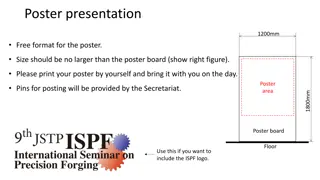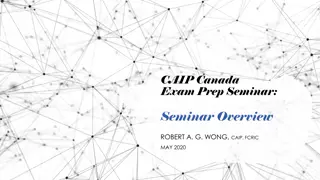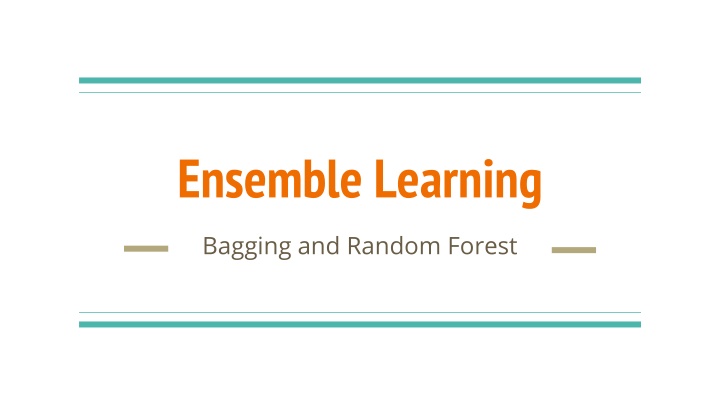
Ensemble Learning for Improved Predictions
Explore the concept of Ensemble Learning, where multiple learners collaborate to enhance predictive accuracy. Discover how combining diverse classifiers can lead to robust machine learning models, illustrated through real-life examples like Kaun Banega Crorepati.
Uploaded on | 2 Views
Download Presentation

Please find below an Image/Link to download the presentation.
The content on the website is provided AS IS for your information and personal use only. It may not be sold, licensed, or shared on other websites without obtaining consent from the author. If you encounter any issues during the download, it is possible that the publisher has removed the file from their server.
You are allowed to download the files provided on this website for personal or commercial use, subject to the condition that they are used lawfully. All files are the property of their respective owners.
The content on the website is provided AS IS for your information and personal use only. It may not be sold, licensed, or shared on other websites without obtaining consent from the author.
E N D
Presentation Transcript
Ensemble Learning Bagging and Random Forest
Overview 2
What does Ensemble mean? A group of items, viewed as a whole rather than individually. In AI, a group of learners combine to form a better learner. 3
What is Ensemble learning ? Ensemble learning is a machine learning paradigm where multiple learners are trained to solve the same problem. Ensemble learning take the attitude that more predictors can be better than any single one and by learning many we can do a better job. 4
Ensemble of classifiers: We build a collection of classifiers, say h1, h2, h3, .. hn And then we construct a final classifier by combining their individual decisions. 5
Real Life Ensemble Classification Examples In Kaun Banega Crorepati (Who wants to be a Millionaire) , audience poll is more reliable than phone friend. Let us demonstrate with a Live Example. 6
Core of Ensemble Learning Combining weak classifiers (of the same type) in order to produce a strong classifier Condition: diversity among the weak classifiers (No gain if all the classifier make the same mistake). Each classifier is weak" but the ensemble is strong."
Two Key Questions 1. How to get different learners? 1. How to combine learners? 11
Where Do Learners Come From Partitioning the data. Using Different feature subsets. Different algorithms. Different parameters of the same algorithm. 12
Combining learners Voting Bagging Random Forest Boosting AdaBoost 13
Bagging By Priyanshu Singh
What is Bagging? Bagging comes from a combination of words, Bootstrap + Aggregating A machine learning ensemble meta-algorithm designed to improve the stability and accuracy of machine learning algorithms used in statistical classification and regression. It also reduces variance and helps to avoid overfitting. 15
Examples of Bagging Let us see two examples of Bagging : In Regression In Classification 17
Bagging On Regression
Errors in Bagging There are two types of errors : Mean Square Prediction Error Out of Bag Error Bag Error 20
How to choose the perfect n As we increase the n, we see that the OOB error stabilizes. This value of n is the optimal value of Bags. If we further increase the value of n, due to similar contents in bootstraps, the computation time increases. 22
Bagging On Classification
We can see, the Regression or classification fits generated from different bootstrap samples are correlated because of the observations that have been selected in both samples. The higher the correlation, the more similar the fit from each bootstrap and the smaller the effect of the Bagging algorithm in reducing variance. 25
Assignment: Prove that, variance for classification and regression fit by Bagging is lower. (given that the algorithm for regression is not very stable) Stable- eg.- Linear regression with no influential points(points which greatly affect the slope of the line) 26
What is Random Forest? Forests are made up of trees and Random forests are made up of Decision Trees. Random Forest is an ensemble learning method for classification, regression that operates by creating a multitude of decision trees. A general method random forest was first proposed by Ho in 1995. 28
Why Random Forest? Bagging simply reruns the algorithm on different subsets of the data. This can result in highly correlated predictors and a biased model. But random forest can decorrelate the base learners by randomly choosing the input variables, as well as sample of datasets. 29
Why does it work? Variance and Bias Reduction
Variance Reduction The trees are more independent because of bootstrap samples and random draws. Random forests are form of bagging and averaging over trees can reduce instability. Consequently, the gains from averaging over a large number of trees can be more dramatic. 31
Bias Reduction A large number of predictors can be considered. More information may be brought to reduce bias of fitted values and estimated splits. Local feature predictor can play a role in tree construction. There are often some predictors that dominate the decision-tree fitting process because they consistently perform a bit better than their competitors. 32
Bagging VS Random Forest Random Forest are among the best classifiers in the world. The 3 tuning parameters: Minimum Node Size Number of Trees Number of Predictors Sampled 33
Pros of Random Forest High Predictive Accuracy Efficient on large dataset Works well with missing values on the dataset. 34
Disadvantages of Random Forest Not easily interpretable Overfit with Noisy Classification or Regression 35
Uses of Random Forest In 2006, Netflix held a competition, with given 8 Billion ratings and 4,80,189 users. The winners BellKor s Pragmatic Chaos used Random Forest for making the recommendation system. The runner ups had the same score for recommendation but what did they use as decision trees. 36
Questions How do we select the perfect n for Random Forest? How is the accuracy increased from Bagging to Random Forest? How do we calculate the weighted index of decision trees when taking into consideration for the random forest? 37
Thank You Any Questions?





